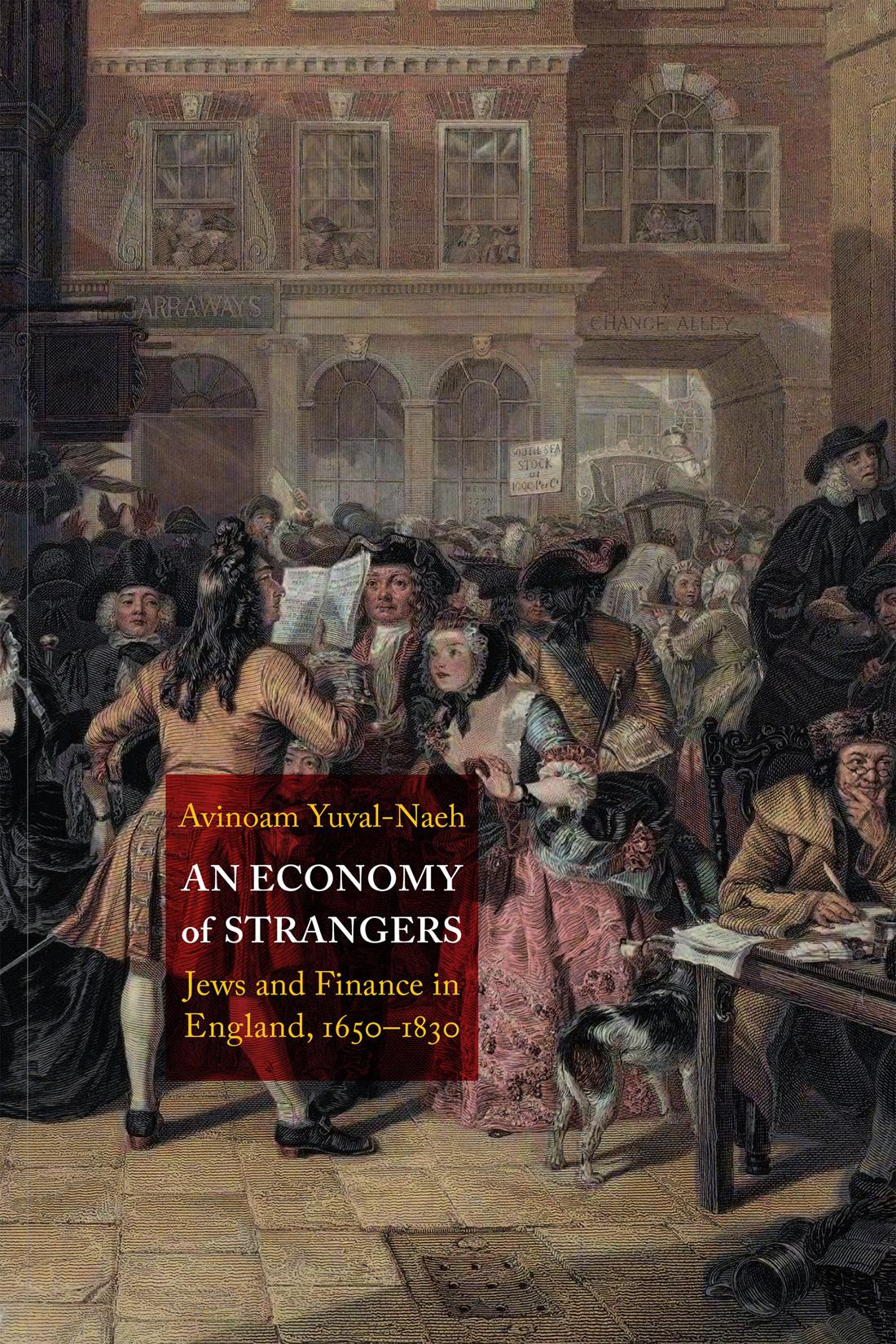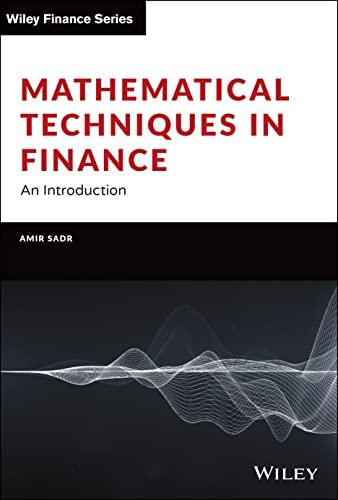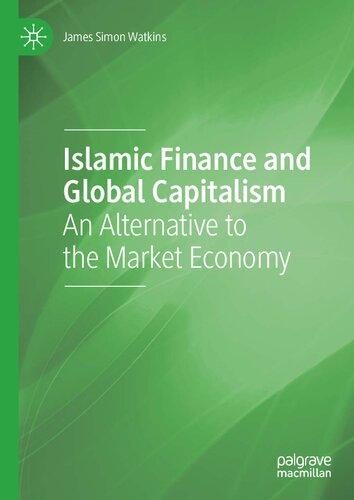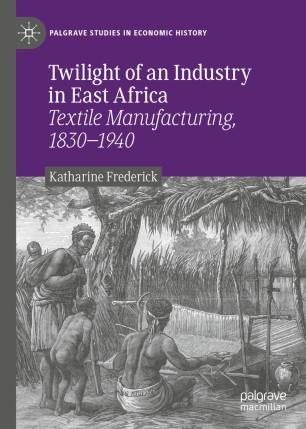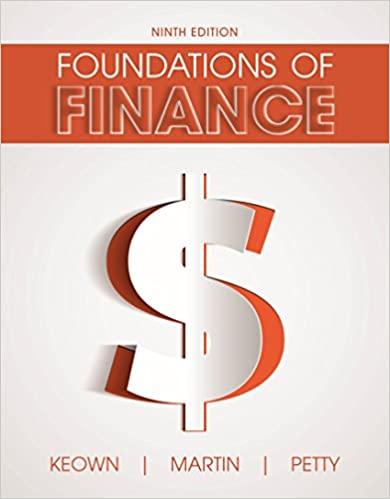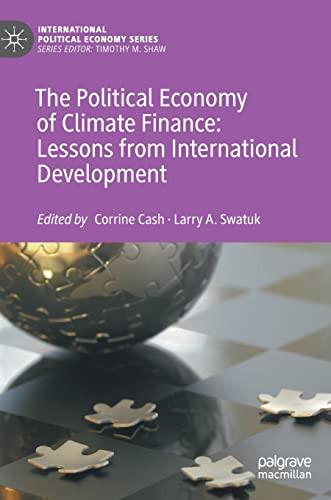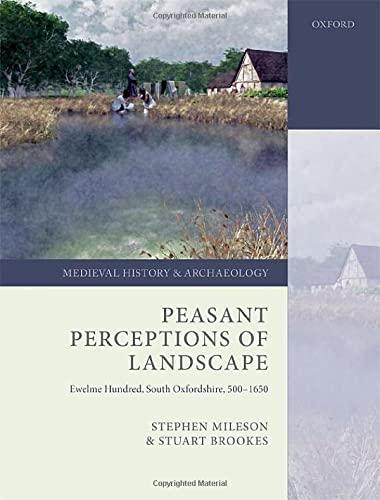Introduction
One of the most persistent and powerful socioeconomic notions in the history of the Jews in the diaspora is the prodigious talent attributed to them in all things economic. From the medieval Jewish usurer through the early modern port-Jew and court-Jew to the grand financier of the nineteenth and twentieth centuries and contemporary investors, Jews loomed large in economic imagination. For capitalists and Marxists, libertarians and radical reformers, the Jews were inextricably intertwined with the economy. In fact, this association has become so natural in both non-Jewish and Jewish circles that to this day we often overlook the contingent dynamics behind the making and remaking of the complex cluster of notions about Jews and economy, emerging as they have within different historical contexts to meet a variety of personal and societal anxieties and needs.
Finance has always been a major axis of these associations. For centuries Christian societies have shunned finance and constructed a normative social system to avoid it, relying largely on the figure of the Jew as a foil. Yet during the long eighteenth century, in a process often designated as the Financial Revolution, finance became the hinge of national and imperial power. At its basis was the growing importance of credit instruments such as bills of exchange, stocks, and public debt, whose spread provoked intense debates. Could a Christian society and state not only accept but also depend on what had long been conceived as un- if not even antiChristian practices? Moreover, in a deep sense the Financial Revolution was also about an economy made more abstract, more
impersonal. This feature had traditionally marked the Jews, being perceived as set apart from and even essentially hostile to organic society. How then could financial economy be accommodated with the Christian notion of brotherhood?
As anthropologists have acknowledged, material exchange is a pivotal dimension of social interactions.1 Societies vary in their systems of exchange, which are themselves multifaceted. The early modern shift of exchange relations from a personal credit system based on face-to-face social networks and unmediated trust to a system of large-scale, mediated, anonymous credit has also entailed change in the cultural regulation of credit: from the dominance of social obligations and moral considerations to that of legal regulation and formal institutions. As sociologist Niklas Luhmann put it, it was a shift from personal trust to system trust.2
From the latter part of the sixteenth century, England—later Britain—experienced these shifts with particular intensity, undergoing a profound process of commercialization that transformed the nature of both state and society. Gradual as they may have been, these socioeconomic changes did not go unnoticed by contemporaries. Key to their concerns was the problem of social attachment: If the force of informal moral obligations declines, what could replace them in holding society together? This backdrop lends an acute historical sense to what is perhaps the most celebrated cultural piece dealing with the issue—Shakespeare’s Merchant of Venice, composed at the turn of the seventeenth century when this movement began gaining momentum. Its dramatic tension pivots around the notion of the bond, a term that recurs forty-one times in the play. Shylock argues for the absolute power of the contracted, formal bond, while his adversaries plead for a social bond based on friendship and mercy.3 Shylock is defeated, yet paradoxically it is by hyper-legalism, not by a Christian ideology of compassion. Which, then, is the normative bond that could hold society together? Or, more precisely, how could the two kinds of bonds be accommodated?
The question becomes more complex considering Shylock’s arguments, which are unsettling for citizens pursuing the benefits of a commercial society. If pure law could not establish a society, neither could mercy. Commercial prosperity requires legal infrastructure, extending to more and more aspects of social life in tandem with commercialism itself. Shylock convincingly declares to the court that the denial of the contract would mean the collapse of “your charter and your city’s freedom.”4 Consequently, the Venetians —or Londoners—resemble the Jews not only in their commercial inclination (as Portia wonders when she enters the court: “Which is the merchant here? And which the Jew?”),5 but also in their need of a formal legal system. The Merchant is thus interweaved with the contemporary confusion of commercialism.6 What is the bond that underlies relationship within society, and how should one accommodate the expanding formal law and traditional communal obligations? How should credit—both financial and social—be negotiated in a society that is becoming increasingly dependent on capital and legislation for economic growth and prosperity?
When The Merchant was written, England was taking early yet decisive steps toward becoming a market society. Market forces came to swallow more and more segments of the material and social domains, taking under their wings fields regulated until that time by customs, including trading in money (usury), grain, and land. Subsistence agriculture and small-scale manufacture waned in favor of commercialized large-scale operations. By the eighteenth century England featured a capital-intensive economy, large-scale market relationships, increased production and consumption, and the majority of its population became dependent on the market.7 These gradual shifts culminated with the establishment of new financial institutions around the turn of the eighteenth century—primarily the Bank of England, the national debt, and a thriving market of securities, which enabled the state to obtain vast amounts for waging its wars. Many English people were now entangled in credit relations not only with their fellow countrymen but with the state as well, via various securities investments. Larger sections of society
enjoyed a surplus of resources, invested in financial ventures, and at the same time increased their consumption. All these factors coalesced into a contemporary sense of transformation that triggered enduring public debates.
At the same time these socioeconomic shifts impelled the English to negotiate the way they imagined their social and political institutions and, at times, to adapt their religious and cultural worldviews to the new structure. The impact of the economic changes was not limited to economic institutions, structures, and thought—it reverberated in popular print, literature, and visual and material culture, and deeply affected political discourse. No wonder then that the rise of finance in the eighteenth century attracted extensive and multidisciplinary research.8
The issue of Jews and Jewishness integrated within these concerns not only as signifying precarious financial practices but also as a concrete historical case. Parallel with the economic shifts, English society experienced the resettlement of Jews after their expulsion in 1290. The 1650s saw intense public controversy around the readmission of Jews, which generated a persisting debate on their status and role in English history. Eventually, they began resettling openly in England, a process that triggered further polemics well into the nineteenth century.
Notwithstanding their concurrence, the Financial Revolution and the reemergence of a Jewish community in England were two independent historical phenomena. This book aims to reveal, however, that contemporaries commonly projected one upon the other, imbuing them with interrelated meanings. Jews came to emblematize the moral discontent with modern finance, expressing most sharply the religious and social concerns evoked by it. Consequently, concerns regarding the status of Jews and Judaism in England fused with fundamental contemporary problems that erupted at the same time regarding the balance of economy, religion, and cultural heritage. Contemporaries conceived the establishment of the new financial order as endorsement of “Jewish” characteristics and approached the question of the Jews’ status as
instrumental in English economic life. When they contested these questions, they negotiated the development of the capitalist system and the nature of their own modernizing society.
The resonance of the Jewish issue in England was amplified by the thriving Hebraist discourse of the time, shared by intellectuals across the entire Republic of Letters.9 In England, however, the interest in matters Jewish went beyond the intellectual sphere: It was a widespread preoccupation, also touching on millenarian expectations. As demonstrated in the last decades by various scholars, early modern English people employed conceptions of Judaism for reconstructing their own identity: Individuals imbued the Bible in their private lives to frame their experience; political authority was imagined and defended in biblical terms; a religious worldview was grounded on a parallelism between the biblical Jews and contemporary English people; and perhaps most markedly, the self-conception and rhetoric of all sides in the enduring religious and political struggles culminating in the civil wars were saturated with biblical images.10 The seventeenth century was the heyday of the English Bible.11
In a simplified manner, the moral engagement with the market in premodern Europe could be encapsulated by the question of usury, which hinged on the biblical prohibition. The productivity of money, the value of risk, the nature of partnership, and social justice and obligation were all subsumed under this ancient preoccupation.
Unlike today’s “interest,” medieval and early modern “usury” was more than a purely financial term—it was also a cultural concept laden with significance.12 Central in its network of meaning was the biblical phrase, “Unto a stranger thou mayest lend upon usury; but unto thy brother thou shalt not lend upon usury” (Deuteronomy 23:19, KJV). The biblical differentiation between brother and stranger captured the aforementioned conflicts embedded in commercialization.
As implied in its title, the current book resonates with two historiographic discussions on the dynamics of alienation, association, and identity on the seam of the modern era. As Francesca Trivellato demonstrated in her seminal work, The Familiarity of Strangers, early modern commercial life entailed intricate dynamics of trust between people of different ethnoreligious groups, as strangers found ways to trustfully collaborate on the one side, while on the other, belonging to the same group did not guarantee absolute trust.13 While Trivellato dwelled on the global relations of commerce, it is the national perspective that constitutes the core of the current book, for the issue at hand reflected the very nature of social unity. Was early modern English society composed of brothers or strangers?
Indeed, estrangement was a defining feature in the experience of modern societies, as aptly conveyed in James Vernon’s recent book on nineteenth-century Britain. Britain became the first modern society in the nineteenth century, argues Vernon, after reaching a critical mass of change in core dimensions of social life that rendered traditional social organization obsolete.14 Late-seventeenth-century England did not experience such changes to such a degree and was not a society of strangers in Vernon’s sense of the term. However, the notion of spreading strangeness was gaining ground, and the changing economic experience was central to this process.
Usury was the nexus of the changing credit relations, the biblical import, and the enduring conflation of finance with Jews—who were themselves conceived as the embodiment of alienation. (Shylock, again, neatly encapsulates these preoccupations.) For a long time usury had been identified with Jewishness, cast as the diametric opposite of the true spirit of Christianity.15 Despite the biblical prohibition, Jews practiced usury against Christians because—so it was commonly believed—they were an exclusive fraternity, which undermined the universal brotherhood heralded by the Gospel. The fact that there was practically no Jewish community in England from 1290 to the last third of the seventeenth century did little to blunt this notion in the English imagination.16 This was distinctly apparent
in Shakespeare’s time. Usury is one of the most acute concerns of our age, stated the historian William Harrison in his Description of England (1587), and is “now perfectly practised almost by every Christian and so commonly,” despite being actually “a trade brought in by the Jews.”17 Thomas Wilson, an MP and a diplomat and civil servant in the Elizabethan government, who dedicated a whole treatise to the problem of usury, phrased this critique much more harshly: “The Jewe, that hath used thys horrible sinne [of usury] most aboue all others . . . hath so robbed the christians wheresoeuer hee came, that his evill lyuinge seene, hee is banished out of the most places in christendome, and worthily; for surely that common weale and country cannot long stande in prosperous estate and welfare, wher merchants and all others become usurers. And no better do I call them then Iewes, yea, worse than any infidel, that wittingly lyue by the onely gayne of their money.”18 Yet increasingly it became apparent that lending with interest had become prevalent in multiple forms throughout English society. Not only did English people lend and borrow frequently with interest, but from the eighteenth century, it came to undergird an elaborate national financial system. The problem of distinguishing between the right Christian practice and the deceptive Jewish one, the “Judaizing critique” in David Nirenberg’s terms, became an obsessive concern, which grew alongside the rapid commercial developments since the latter part of the sixteenth century.19 The tension between the Shylockean foundations of commerce, profit, and contract and Christianity as self-attributed by English society was painfully present.
The development of the market in England during the sixteenth century was a gradual process. Beginning in the 1520s, England’s population, which stagnated after the Black Death, began a steady growth: From around 2,400,000 in 1520, it reached 3,900,000 by the 1590s—a remarkable rate by early modern standards. This growth propelled economic activity, which in turn enhanced demographic growth, but it also caused a drastic rise in the demand for goods that the manufacturing infrastructure could not meet.20
Alongside other factors, it resulted in chronic inflation, a phenomenon new to early modern people. By the turn of the century, the average price of foodstuffs was five times higher than a century earlier.21 These rates seem fairly low by modern standards, but in those days they were not only a cause for concern but also incomprehensible. The growth of demand was not the sole factor in the soaring of prices. It is assumed that the oversupply of bullion (gold from Latin America and silver from German mines) was one of the major causes of inflation in Europe; in England, however, this effect was not as decisive. Yet as Craig Muldrew demonstrated, it was not only bullion that mattered, but all means of exchange. As cash was used in fewer than 7 percent of economic transactions, credit constituted the lion’s share of exchanges. Consequently it was the amount of credit, not only of specie, that mattered. The expansion and increased complexity of the market required the extension of credit, leading to a rise in prices but also bolstering the market itself, in mutually reinforcing dynamics.22
The expansion of credit was associated with growing indebtedness. Most early modern English households were both creditors and debtors.23 The pervasive form of credit was sales credit, which consisted of an informal contract that did not carry interest. These small debts accumulated to vast amounts in a complex social network, and they were eventually reckoned against one another, leaving the smallest possible net amount to be paid in cash. Both trust and moral reputation were indispensable for this complex system to function. All participants had to rely on each other, thus increasing their interdependency and mitigating the growing competitiveness of the early modern market. The latter, claims Muldrew, should be understood in terms of trading in reputation no less than in material goods.24
From the late sixteenth century, however, the use of formal forms of credit expanded, especially from the mid-seventeenth century.25 This was directly connected to the legal changes regarding usury. Until the mid-sixteenth century, the legal approach to usury in England was traditionalist. Attacks on the scholastic doctrine of
usury by fifteenth-century thinkers such as Konrad Summenhart and Gabriel Biel, and later John Eck and Martin Bucer, did not gain acceptance in England, where the limitation on moneylending was reinforced by the Act of 1487.26 In 1545, however, Henry VIII’s Parliament licensed interest loans of all sorts with a maximum rate of 10 percent. The statute was revoked in 1552 and revived again in 1571. In 1624 the interest-rate ceiling was reduced to 8 percent, in 1651 to 6 percent, and in 1713 to 5 percent.27
These repeated attempts to regulate usury might create the misleading impression of a steady, progressive process. Behind the legislative scenes, however, was a series of intense public controversies, and the legal bottom line did not necessarily represent the parliamentary, let alone the public, approach to the issue.28 This setting is the focus of Norman Jones’s study on the parliamentary discussions on usury between 1571 and 1624. Jones points to a gradual but profound shift between the acts of 1571 and 1624. In the late sixteenth century, the question at hand was the manner of applying the word of God to human law. Eventually, the pragmatic approach prevailed, yet its concern was still religious. During the early seventeenth century, the legal permission to lend with interest given in 1571, which implied an undesired option, became understood as sheer acceptance. Consequently, Jones demonstrates, the parliamentary discourse of the 1620s stressed the secular and economic reasoning that should undergird legislation, with hardly any concern with squaring divine with human law. The difference between the acts was more rhetorical than substantial—both permitted the practice—but this change of rhetoric marked the shift of the cultural perception of usury.
What occasioned this discursive shift? Clearly, economic changes were in play. The late sixteenth century saw the emergence of the great trading companies, the increase in domestic investment, and the spread of credit relations.29 It was clear that not only the poor borrowed money. But what was the cultural underpinning that facilitated this shift? Jones, and before him Richard Tawney and Benjamin Nelson, emphasized a Protestant revolution in religious
ethics, along lines similar to Max Weber’s thesis. Protestantism’s emphasis on individual conscience made sin a private matter; accordingly, they suggested, the defining element of usury also shifted from action to intent, and the sin moved from the social to the mental sphere. As this could not be policed by the state, social utility remained the only moral standard in the public domain. Economy, according to this explanation, began its divorce proceedings from theology, never to be reunited again.30
Despite its conceptual elegance, the Weberian explanation is not borne out by history, as many have shown. If we focus on the debate over usury in England, we see that the promoters of a liberal attitude were not necessarily Puritans, while several of their fiercest opponents were. Moreover, few justifications for usury were made on the ground that it belonged to an inner mental realm.31 Scholars of continental Europe have demonstrated the inconsistency of the theory with concrete settings, both Catholic and Protestant. Furthermore, as Jones has shown, opposition to the traditional prohibition on usury developed long before the Reformation.32 Yet criticism of the grand theory does not exclude other possible connections between Protestantism and the development of capitalism. As Johann Sommerville suggested, Protestants’ breach with the scholastic heritage eased the intellectual challenges confronted by those who did adopt a progressive stance, compared to their Catholic peers. In other words Protestantism was a supportive condition, not an exclusive historical cause for the growing acceptance of usury.33
Lending with interest was not merely culturally accepted. By the turn of the eighteenth century, with the establishment of the Bank of England (1694) as a shareholders’ company aimed at funding the ever-growing government expenditure on warfare, interest became “the basis of the whole system of credit,” to quote Sir James Steuart.34 This facilitated an unprecedented national debt, parceled into bonds of government loans. A negotiable commodity, they quickly became the pivot of a prosperous securities market. The national debt kept expanding. It is estimated that from £6.1 million
in 1694, lent by five thousand creditors, it swelled to £78 million in 1750, lent by sixty thousand. More and more people became involved and affected by state finance. The number of Jewish stockholders and their invested capital also grew. While the contribution of Jewish investors to the first borrowing of the bank in 1694 was negligible, in the 1710s they figured in the top section of stockholders (10 out of the 74 holders of £5,000 and more). This trend only increased during the eighteenth century.35
The new political-economic condition in England during the long eighteenth century imbued the traditional tendency to associate Jews with economy with distinct meaning. The rise of the British Empire to world domination, the consequent increase of the public debt and the centrality of finance, and the rise to prominence of several Jewish financiers have converged to create a particularly fertile ground for a new, modern economic stereotype of the Jew. This book contends that the English association of Jews with finance, and particularly with the modern financial economy, has been boosted by a parallel religious significance of both economy and the Jews in Christian eyes. Economic relations have shaped the vision of society and its boundaries and the map of social communication— and vice versa. Jews have had an indispensable eschatological role in Christian belief, also manifested in the material world: Their economic conduct has been interpreted as revealing contesting notions of trust and belief, of hostility toward Christianity, and of their own ideas of redemption. This turned notions of Jews and Judaism, as well as of Jewish history, into conceptual keys with which to rework contemporaries’ own moral and legal attitudes to commercial reality. Consequently, these notions offer a distinct analytical perspective for understanding how eighteenth-century people made sense of that reality.
This book focuses on the rise of finance and the apprehensions that accompanied it. Yet another dimension was entwined to this story—the debate over luxury. In the long eighteenth century, with the dramatic expansion of global commerce, luxury goods reached broad sections of society. New foods and consumer goods
encouraged the development of new forms of sociability and civility, heralding social and intellectual shifts. Eighteenth-century culture saw luxury as a positive progressive force that promoted the arts, culture, and politeness, let alone the economy; at the same time it was seen as a force that threatened the cultivation of both society and the individual. Thus during that period both the definition of luxury and its moral evaluation became contested. In the words of Maxine Berg and Elizabeth Eger, “luxury was no less than the keyword of the period, a central term in the language of cultural transformation.”36
This book argues that in its rhetorical and cultural levels, the debate about luxury had much in common with the debates about finance and the status of the Jews in the long eighteenth century. All three were construed as a force that “feminized” society; as an urban force that thwarted the genuine national spirit; as economically unproductive; as a peril to religion; and as essentially related to foreign forces that defied the national interest.37 The overlapping of the three issues made the Jews a “thick concept” for contemporaries, whose importance went beyond its bounds and became a vehicle for broader deliberation. In the English context of the long eighteenth century, one’s approach to the Jews could plausibly project on the questions of luxury and finance, and vice versa.
The braiding of political-economic concerns with the development of Anglo-Jewish society dovetails with the growing scholarly interest in Jews’ economic life—which some refer to as an economic turn in Jewish history. In general this body of works explores the ways economic discourses and practices have shaped Jewish identities and experiences, especially in their passage into “modernity.” Derek Penslar’s classic work and more recent ones by Cornelia Aust, Adam Teller, Rebecca Kobrin, and others demonstrate this trend.38 Conversely, my book looks at the relationships between Jews/Judaism and the economic discourse as a means for understanding more subtly the development of the latter and does not engage with its influence on the intra-Jewish world. Thus,
although the book resonates with this growing body of works, it does not dialogue with it directly.
The current book is inspired particularly by two recent works in the field—Jonathan Karp’s The Politics of Jewish Commerce (2008) and Francesca Trivellato’s The Promise and Peril of Credit (2019). Both take the early modern economic discourse about the Jews as a pathway for delving into the profoundly shifting European economic thought of the time. Central for both projects is a subtle analysis of the relations between ideas and the changing concrete realities. Consequently, they reveal the impact of notions and images of “Jewish commerce” in the development of protomodern political and economic paradigms and mechanisms.39
Like these works, the present book demonstrates that Jews are a revealing key for understanding the tensions through which capitalism has developed in Europe. It departs from them however on two levels—perspective and methodology. Karp provides a broad European account of the early modern development of the political and economic discourses on the Jews. To maintain such an overview, he focuses on the nexus of the political and economic, and on select writers whom he uses to represent different national settings. Trivellato’s book has a similar geographical scope, and it too focuses on economic writers (in the inclusive sense). The geohistorical breadth of both works, I believe, comes at the price of narrowing the thematic scope. In contrast, by focusing on the English case (with auxiliary comparisons), I wish to provide a more subtle analysis of the cultural dynamics behind the historical changes. This focus also allows a broader thematic view, exploring diverse discursive settings rather than concentrating on distinct economic or political figures engaged directly with the status of the Jews. Many of the texts studied in the current book—biblical commentaries, travelogues, popular print, and drama—are seemingly peripheral to the political-economic tensions of the time. Yet bringing them together uncovers the underlying engagements with these tensions that permeated contemporary discourse.
Shifting the focus away from intellectual history to the broader economic and political culture, the book thus advocates a broad and culturally oriented approach to the economic field as organically integrated with other social activities and beliefs. Economic culture in its full sense, it premises, is expressed not only in economic thought and policy but in a broad array of cultural productions. Accordingly, it highlights the dependencies of the economy and social norms and imagery, implying a broader conception of the pool of sources historians may employ to understand economic culture.40 This broader outlook could better guide us, I suggest, in discerning the concerns of ordinary contemporaries and the contested reception of economic ideologies and practices. Beyond that, unlike “proper” economic writing, these diverse discourses are essential for understanding Jewish-Christian relations as well, and the operating of economy in them. As illustrated in the following chapters, this different perspective reveals the shifts, conflicts, and frictions within contemporary conceptions of the relations between Jews and finance, which often do not feature a clear and predictable correlation between one’s approaches to commerce and to the Jews. While scholars of Jewish history have focused on the Continent, it was England that laid the groundwork of the modern economy. Understanding the modern ties of Jews and economy—both concrete and symbolic—must involve an in-depth study of this setting. This focus allows subtle scrutiny of the economic imagery of the Jews and the intricate ties of pro- and anti-Jewish attitudes, and may shed new light on the conflictual relations of economic liberalism and the civil and economic evaluation of the Jews. It also allows a deeper look at the social functions these sets of images and notions fulfilled. As this book will demonstrate, concerns and discussions on economy and on the Jews were imperative in the broader process of the formation of British identity in the long eighteenth century.
The focus on the English setting carries advantages, as I hope to convince, but also a price: It might veil the imperial context that was building up during the long eighteenth century and which gradually became a fundamental factor in British economy. An increasing
portion of the capital invested in the financial market came from colonial trade profits. Conversely, companies whose stocks were traded on the market were increasingly involved in that trade. Capital, credit, and colonization were thus intrinsically connected. So was slavery: From the mid-seventeenth to the early nineteenth century, it is estimated that more than three million Africans were transported to British colonies.
Jewish merchants and investors have played a key role in all these developments. In recent years scholars have increasingly explored this involvement after long years of neglect. Unfortunately, comprehensive engagement with this topic is beyond the scope of the current book. The theme is engaged with sporadically in the book, and the reader may draw on other existing works for that purpose. Indeed, an integrative account of Jews’ role—both real and imagined—in the development of modern finance, and in the colonial trade in commodities and human beings, has yet to be published.41
A terminological note regarding my use of “England” and “Britain” and their derivative adjectives is in order. The political entity studied here underwent fundamental transformations during the period under study. In 1535 Wales was annexed to the Kingdom of England, and in 1707 Great Britain was formed with their union with Scotland. In 1801 the union with Ireland formed the United Kingdom. While the book begins with seventeenth-century England and ends with the early nineteenth-century United Kingdom, most of the sources, figures, and historical settings studied here are English, not least due to the fact that Jews concentrated in London and several other major towns in England. Accordingly I will refer to England rather than Britain, unless when referring to a formal state apparatus or in a quote.
Relatedly, note that the historical account set here is an AngloJewish history. Its focus is not on the development of the Jewish community but rather on the way it figured in English imagination
and on the functions it played over the long eighteenth century.42 Perhaps unsurprisingly, Judeophobia was expansive in this matrix of shifting attitudes. Accordingly this book is embroiled in the history of antisemitism, a theme on which intensive critical discussion has been going in recent years, in both academia (the American Historical Review and Zion have dedicated special issues to it) and the public sphere. The debate, first of all, is conceptual. Is there a definition of antisemitism that can describe the broad range of historical phenomena of Judeophobia without losing its analytical force? While the dominant voice advocates the use of the term and its analytical importance, others have been increasingly criticizing it. Holocaust historian Yehuda Bauer admitted that the concept blurs scholarly efforts to make distinctions between phenomena, but that its use is yet warranted for lack of a better one. Conversely, Jonathan Judaken proposed using the term Judeophobiainstead.43
The question here is not merely terminological but one that projects dramatically on other issues of high public profile and even political implications. Are the phenomena of Jew-hatred distinctly different from other historical and current forms of xenophobia, and if so, how? Was the Holocaust the “natural” culmination of this history or a radical divergence within it? What is the relationship between traditional and contemporary forms of Jew-hatred? The terminological policy one follows implies certain approaches to these dilemmas, with methodological implications relevant to the present book. Using the terminological lens of antisemitism encourages comparisons within Jewish history and emphasis on continuities; its avoidance invites comparisons with other sorts of xenophobia and emphasis on discontinuities. The chosen term thus encapsulates a debate between “eternalist” and “historicist” approaches to phenomena of Jew-hatred, the former affiliating them together as essentially “antisemitic,” while the latter tends to see them as a series of distinct, contextually embedded cases.
In this book the term antisemitism is deliberately avoided. As I hope to convince in the following chapters, the historical developments analyzed are characterized by changes and
idiosyncrasies more than by continuities. Thus, in contrast with works on early modern Anglo-Jewish history stressing the persistence of antisemitic traditions,44 I propose that a more adequate way to make Judeophobic incidents comprehensible is by contextualizing them within the shifts in English society during the long eighteenth century. Here I run the opposite risk of being biased to see phenomena as discrete and similarities as superficial, overlooking the alternative analysis of continuous traditions.
Avoiding the term allows a more subtle observation of the intricate and varied relations between manifestations of Judeophobia and Judeophilia. “Philosemitism” is only a little less fraught with tensions and dilemmas than its counterpart. Indeed, some critics have argued that it is analytically useful to see both phenomena as offshoots of the same root.45 Zygmunt Bauman usefully developed the concept of “allosemitism” (coined by Artur Sandauer) to denote the practice of “setting the Jews apart as people radically different from all the others, needing separate concepts to describe and comprehend them and special treatment in all or most social intercourse.” Allosemitic discourse is essentially exceptionalist but does not imply a specifically negative or positive approach (although it does imply a radical approach of some sort). Rather, in a deeper sense, it implies the inherent ambiguity of Jews, their being a stumbling block to the attempt of making order in the world. It is thus, according to Bauman, the primary impetus underlying both anti- and philosemitism, making the Jew an abstract, ahistorical concept, detached from concrete social life.46
The allosemitic disposition contradicts the approach of “normalizing” the Jews. Yet, as the historians Adam Sutcliffe and Jonathan Karp wonder, the latter is probably an inherently unattainable aspiration in a Christian civilization and therefore an ahistorical yardstick for the evaluation of non-Jewish attitudes toward Jews—at least in the past. Indeed, Sutcliffe and Karp’s revitalizing approach to the study of philosemitism demonstrates the need for an analysis of the varied historical manifestations of this phenomenon in their unique contexts, as a fundamental stage in
such metadiscussion.47 As the following chapters demonstrate, the shifts between pro- and anti-Jewish positions in the long eighteenth century were nuanced: Similar images or accounts had different meanings and implications in different contexts and served different aims.
Taking this conceptual deliberation into account, I will proceed with terminological caution and resume this discussion in the Epilogue.
The book is arranged both chronologically and thematically, spanning the period from the mid-seventeenth to the early nineteenth century. Commercialization was a long historical process, stretching beyond this book’s chronological scope. Instead, it is concerned with what could be loosely termed the long Financial Revolution. Carl Wennerlind recently claimed that focusing on the institutional novelties of the 1690s obscures previous innovations in political economy that preceded them and served as their theoretical support.48 This book shares this perspective and stretches the Financial Revolution back to the early seventeenth century. Yet it also stretches it forward in time, to the early nineteenth century, when—after Britain’s temporary withdrawal from the gold standard and the following Bullionist controversy—the age of paper money began.49 This periodization also fits the basic framework of AngloJewish history: from the polemic on Jewish readmission in the 1650s to the onset of the campaign for emancipation in the 1830s.
This book is structured in three thematic parts: “Usury,” which deals with the period between the middle of the seventeenth century to the middle of the eighteenth century, and elaborates on the dismantling of the traditional ethics of usury and the new perceptions of the Jews it entailed; “Finance,” which deals with the eighteenth century and delves into the new political-economic circumstances that evolved during the so-called Financial Revolution and the heated discussions on the Jews in its wake; and “Reform,”
which focuses on the late eighteenth to the early nineteenth century, and investigates the polemical public discourse on the improvement and emancipation of the Jews in England during this period.
Part I, “Usury” (Chapters 1–3), focuses on the earlier period of the Financial Revolution in the second half of the seventeenth and the beginning of the eighteenth century, and examines the persistent ethical problems of usury. Usury effectively epitomized the cultural conflicts embedded in commercialization, and at the same time the problem of integrating Jews within Christian society. This part proposes that the idea of usury was entrenched not only in economic ideology but also in historical imagination. I illustrate the complex and interrelated discussions about Jews and usury through different themes and demonstrate how far they are from a simple continuation of medieval prejudices. Chapter 1 investigates the repercussions of the debate regarding usury on the public controversy over Jewish readmission in the 1650s. It demonstrates that the polemic implied a historiographic debate over the place of usury in Anglo-Jewish medieval history. The traditional historical account associated Jews and usury and explained the expulsion against that backdrop. Remarkably, however, this proved to be a side issue in the attack against the Jewish cause. Counterintuitively, staunch opponents of readmission sought to revise and belittle the association between Jews and usury, while supporters of the readmission accepted the traditional narrative. I explain this anomaly by demonstrating the critical role played by the historical narrative of the expulsion in the debate, and its mutual relations with the changing conception of lending with interest.
Chapter 2 demonstrates the profound contemporary shifts in the understanding of the biblical prohibition on usury. English Bible commentaries of the seventeenth and eighteenth centuries reveal a profound change in the way usury was understood and narrated from the last third of the seventeenth century. Earlier biblical discourse had made sense of usury by associating it with the postbiblical history of the Jews as undermining Christian society through their economic practices. From the latter part of the seventeenth century, however, the focus turned to an imagined
account of the ancient Israelites, which implied a novel understanding of usury: Historical descriptions of this society as an encapsulated rural autarky became a basis for explaining usury as an irrelevant prohibition. This became a stock description among English writers and facilitated the detachment of the biblical ethics of usury from contemporary English society.
Chapter 3 ties together contemporaries’ engagement with past and present Jews through the genre of ethnography. The seventeenth century saw a growing interest in the ethnography of the Jews, involving both their ancient past and present. This chapter demonstrates the decline of the idea of usury as an organizing principle of contemporary Jewish economic life in English eyes. It was replaced by a growing preoccupation with the socioeconomic characteristics of the ancient Jews, whose organizing structure was depicted very similarly to the shift described in Chapter 2. The last section of the chapter ties Part I together, fleshing out a feature that played an essential role in the shifts that marked the different genres and cases: the evolution of a historical analytical perspective on Jewish economic life. This move entailed a historical reimagination of the Jews, which undermined the cultural force of usury.
Part II, “Finance” (Chapters 4–7), focuses on the bulk of the eighteenth century and dwells on the anxieties inflamed by the success of the new public credit system. These related to the modern concept of national debt, commonly seen not only as everburgeoning but also as having transformed social and political relations into creditor-debtor relations and subjected the state to speculation. The chapters in this part demonstrate how these concerns became mediated through contemporary discourse on the Jews. While Part I reveals how the traditional concept of usury was dismantled during the second half of the seventeenth century, here I argue that the setting of the mid-eighteenth century nurtured a new association of Jews with finance: as undermining not private finance (through usury) but public finance and the very integrity of English society and politics. The need to fund the wars of the 1740s–1760s fostered the rise of several spectacularly successful Jewish financiers. During this belligerent period, which shaped the future
trajectories of British nationality, public concerns over empire, politics, finance, and religion meshed. This setting incited the consolidation of a new stereotypical figure of the Jewish financier, which proved a compelling lightning rod for all these concerns.
Chapter 4 explores the expanding discourse against finance from the 1690s to the early eighteenth century. It investigates the involvement of Jews in the financial market and shows that, on the one hand, it was significantly increasing, yet on the other hand, notwithstanding the intense public critique against the expanding market, Jews were not seen as a special target. The association of the financial market and Jews was not a natural transition from the traditional image of the usurious Jew, as often portrayed; rather, as demonstrated in the following chapters, it was a new notion that evolved in the particular concrete context of mid-eighteenth-century England.
Chapter 5 addresses the public agitation over the 1753 Jewish Naturalization Bill—the most consequential episode between the readmission of the Jews and their mid-nineteenth-century emancipation. The bill offered Jews a private act of naturalization without the sacramental test. A costly and cumbersome process, the measure could have had only minor practical impact; however, it ignited public clamor through hundreds of newspaper columns, pamphlets, and prints. What made it so resonant, and why were its opponents so successful? It is commonly argued that the affair was an instance of partisan conflict in which the Jews themselves played an incidental role. Alternatively, this chapter argues that a central reason for its resonance was that the discussion about the Jews evoked concerns with the expanding financial market and its sociopolitical implications. By the 1750s the linkage of Jews in public imagery with destructive aspects of finance was gradually taking shape, lending the opposition to the bill an effective polemical vocabulary.
Chapter 6 explores the development and consolidation of a new stereotypical Jewish figure, tightly related to finance. Against the backdrop of the decline of the traditional emphasis on Jewish usury charted in Part I, new patterns of representation evolved in the
eighteenth century. The chapter concentrates on drama and popular print and demonstrates a development of two stages. While at the beginning of the century it became common to portray the Jew as threatening to defile the English woman, around midcentury this representation combined with the charge of financial manipulation. This move is reflected by the shift in the productions of The Merchant of Venice and in their public resonance throughout the century, from low-key references in the first decades to a powerful motif in the public discourse from the midcentury.
Chapter 7 reveals two dimensions that rendered the new Jew so effective for engaging socioeconomic concerns: the linkage of finance with gender, and the framing of the discourse within eschatological rhetoric. These facilitated scapegoating the Jew as a financial demoralizer. In contrast to other historians, I argue that the trigger for this move was not a counter-reaction to financial developments but rather the establishment and cultural acceptance of finance—the image of the Jew was used not to denounce finance but to distinguish between its “right” and “wrong” uses. Accordingly, the changing representation of the Jew illuminates contemporary ideas about English society and economy not less, and perhaps even more, than the light they throw on Anglo-Jewish relations.
Part III, “Reform” (Chapters 8–9), discusses the mental convergence of Jews and finance during the early Age of Reform (c. 1790s–1830s), when anxieties about the power of finance and the paper economy blended with new agendas of reforming English society and the Jewish community alike. These trends resulted in new modes of discourse about both the Jews and the economy and on their mutual entanglement. Chapter 8 engages the perceived nexus of Jews and the economy through the intensifying discourse on Jewish criminality. In the second half of the eighteenth century, a growing preoccupation with Jewish crime developed into a conception of a Jewish illicit counter-economy of trade in stolen goods. This added to their perception—illustrated in Part II as manipulators of the poorly regulated credit market who capitalized on its anonymity and exploited its deficiencies. Both were conceived
